공기 제어 밸브 | 공기 신호를 사용하여 안전한 비전기식 자동화를 위해 흐름을 제어합니다. 에어 파일럿 제어 밸브 제품군을 살펴보세요. 저압 공기 신호를 사용하여 메인 밸브 스풀을 이동시켜 전력 없이도 유량을 제어합니다. 따라서 화학 공장이나 광산과 같은 위험한 환경이나 습기가 많은 애플리케이션에서 본질적으로 안전하고 신뢰할 수 있는 선택이 될 수 있습니다. 지금 비전기식 제어 시스템에 적합한 밸브를 찾아보세요.
프로젝트에 필요한 제품이 필요하신가요?
소싱이 어려울 수 있다는 것을 잘 알고 있습니다.
고유하거나 찾기 어려운 구성 요소도 주저하지 말고 양식을 작성하여 문의 사항을 제출하고 원하는 맞춤형 솔루션을 받아보세요! 일반적인 솔루션은 잊어버리세요. 고객의 정확한 요구 사항을 파악하고 꼭 맞는 결과를 제공하는 데 특화되어 있습니다.
당사의 공기 제어 밸브는 탁월한 신뢰성으로 공압 시스템의 공기 흐름을 제어하고 관리하도록 전문적으로 설계되었습니다. 견고한 비전기식 작동이 필요한 애플리케이션에 이상적인 이 밸브는 다양한 산업 자동화 작업에서 원활한 작동과 정밀한 제어를 보장합니다.
공기 신호(파일럿 작동)로 작동하며, 특히 전기 작동이 선호되지 않거나 불가능한 환경에서 신뢰할 수 있는 성능을 제공합니다.
수명을 고려하여 제작된 당사의 공기 제어 밸브는 까다로운 산업 조건을 견딜 수 있어 일관된 작동과 최소한의 유지보수를 보장합니다.
단동 및 복동 액추에이터의 공기 흐름 방향을 정밀하게 관리할 수 있도록 다양한 구성(예: 3/2, 5/2, 5/3 방식)으로 제공됩니다.
특히 파일럿 작동식 공기 제어 밸브는 소량의 공기 압력(파일럿 신호)을 사용하여 더 큰 내부 스풀 또는 포핏을 이동시킵니다. 이 동작은 주 공기 흐름을 다른 포트를 통해 리디렉션하여 공압 실린더, 액추에이터 또는 기타 장치의 작동을 제어합니다. 이 방법을 사용하면 밸브 자체에 직접 전기를 입력하지 않고도 강력한 제어가 가능합니다.
최소한의 압력 강하로 최대 공기 흐름(Cv/Kv)을 제공하도록 최적화된 내부 흐름 경로로 설계되어 효율적인 액추에이터 작동을 보장합니다.
정밀 가공된 스풀과 고품질의 내마모성 씰은 긴 작동 수명과 일관된 성능을 보장합니다.
다양한 산업 환경에 적합한 광범위한 주변 온도 및 미디어 온도에서 안정적으로 작동하도록 설계되었습니다.
많은 시리즈가 여러 밸브를 컴팩트하게 조립할 수 있는 매니폴드 베이스를 제공하여 배관 및 설치를 간소화합니다.
예: 3/2, 5/2, 5/3(중앙 폐쇄, 중앙 배기, 중앙 압력).
입구, 출구 및 배기 포트의 나사산 크기(예: G1/8, G1/4, G1/2).
싱글 에어 파일럿, 더블 에어 파일럿.
주 공기 공급 및 파일럿 공기 신호의 범위.
밸브의 공기 통과 용량을 나타냅니다.
파일럿 신호 적용 후 밸브가 이동하는 데 걸리는 시간입니다.
일반적으로 알루미늄 합금을 사용하여 강도와 내식성이 우수합니다.
본체 포트 또는 매니폴드 마운트 가능.
자세한 매개변수는 개별 제품 설명서 또는 기술 전문가와 상담하세요.
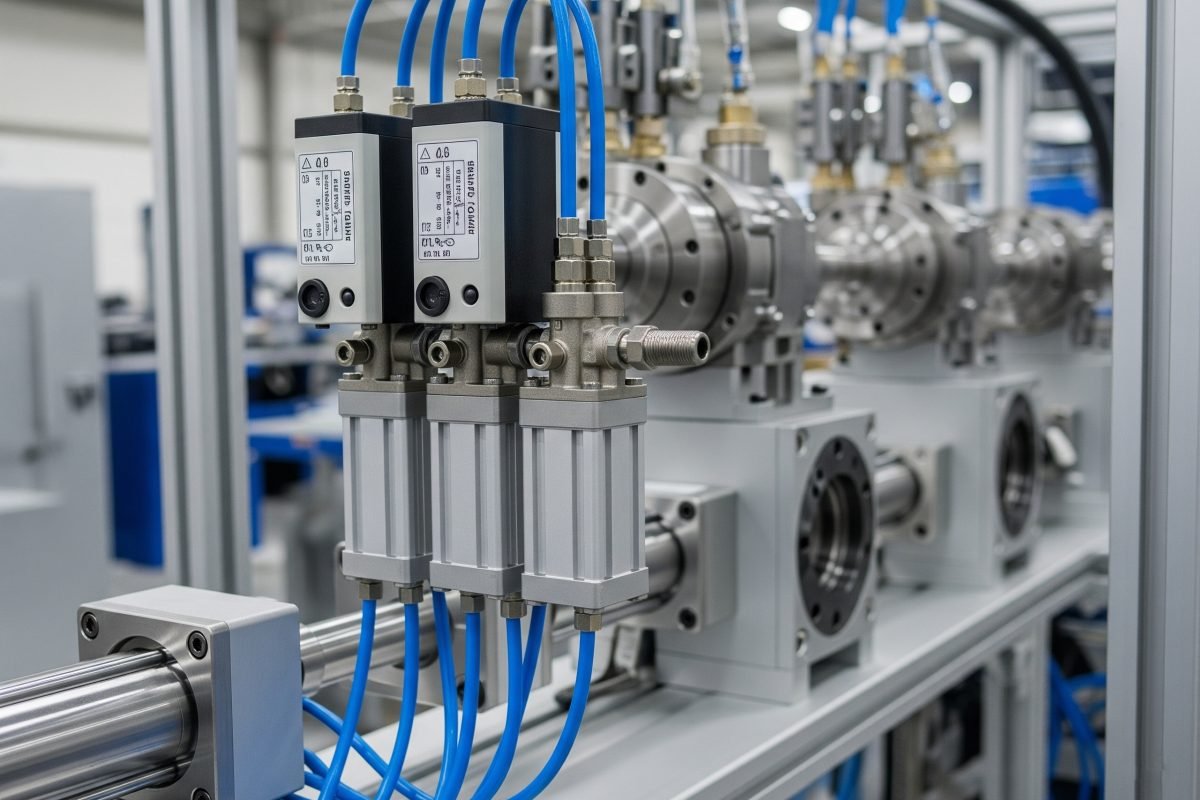
공압 실린더와 회전식 액추에이터의 움직임(확장/축소, 회전)을 제어하기 위해 공기 흐름을 유도합니다.
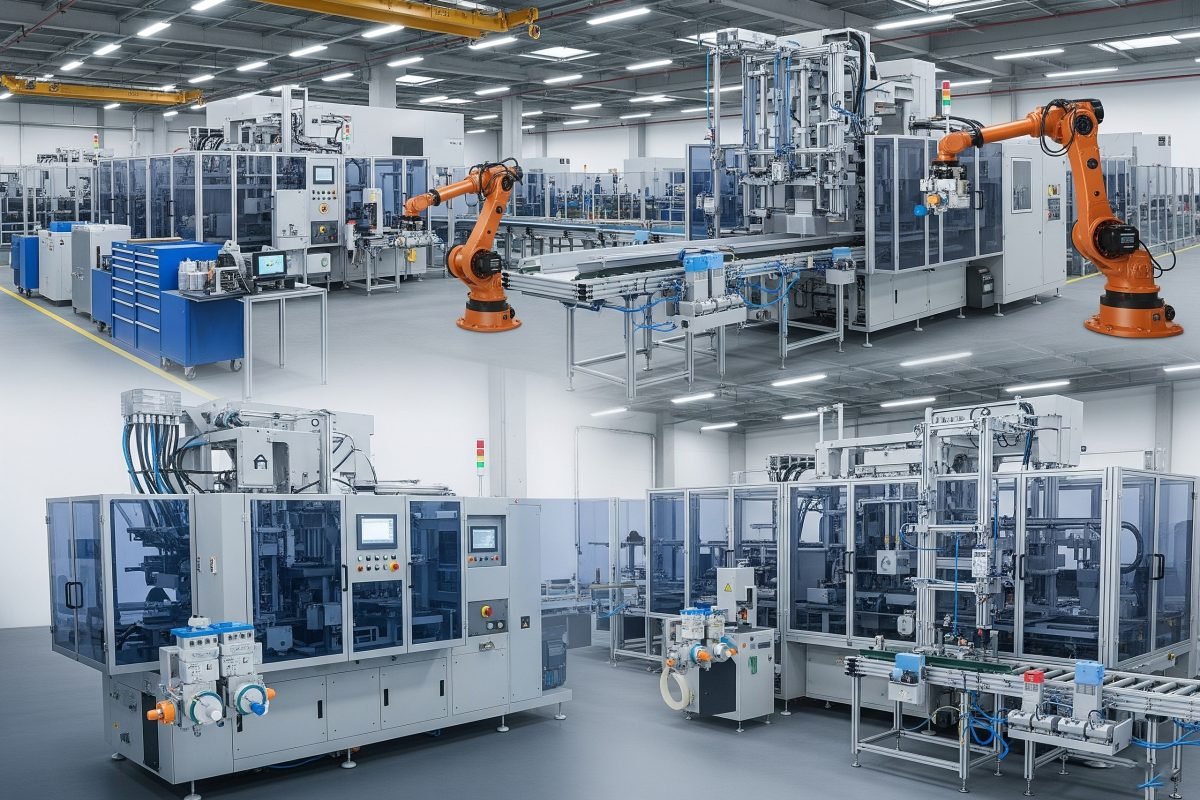
포장 기계, 조립 라인, 자재 취급 시스템, 로봇 애플리케이션의 필수 구성 요소입니다.
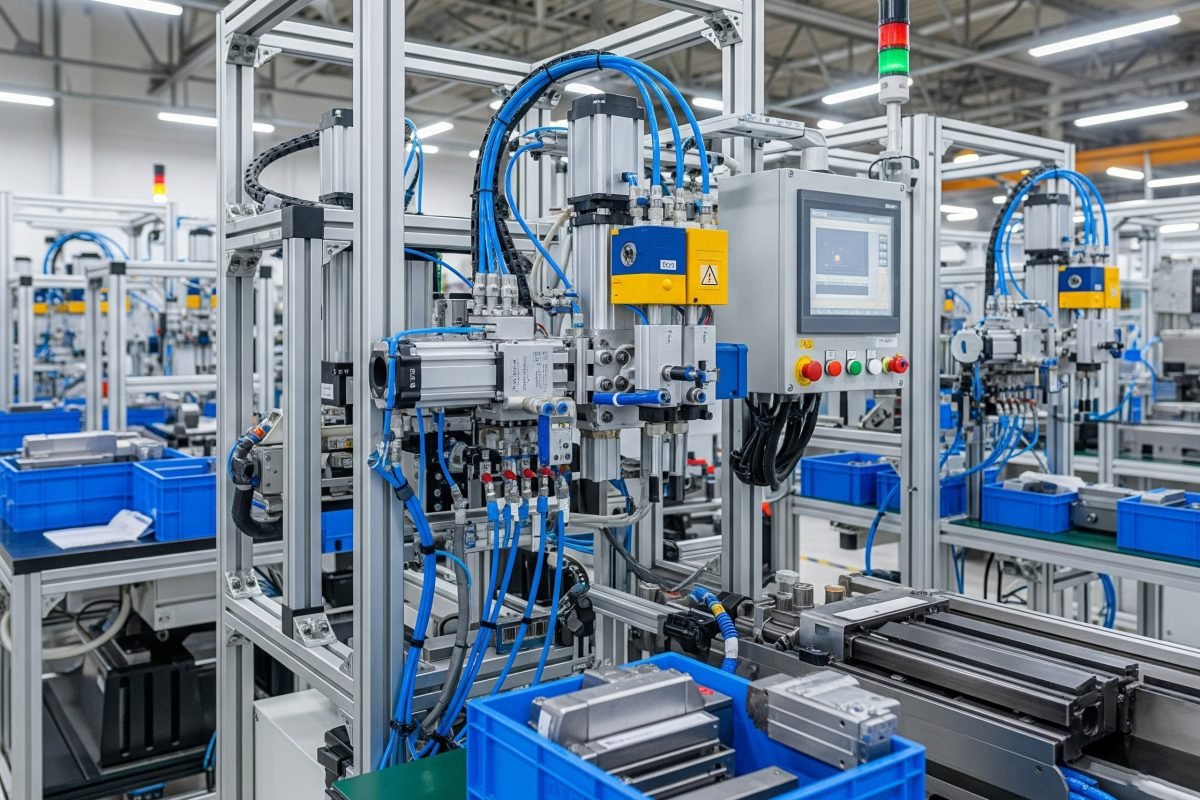
분류, 전환, 클램핑 및 기타 자동화된 작업을 위한 다양한 제조 공정에 사용됩니다.
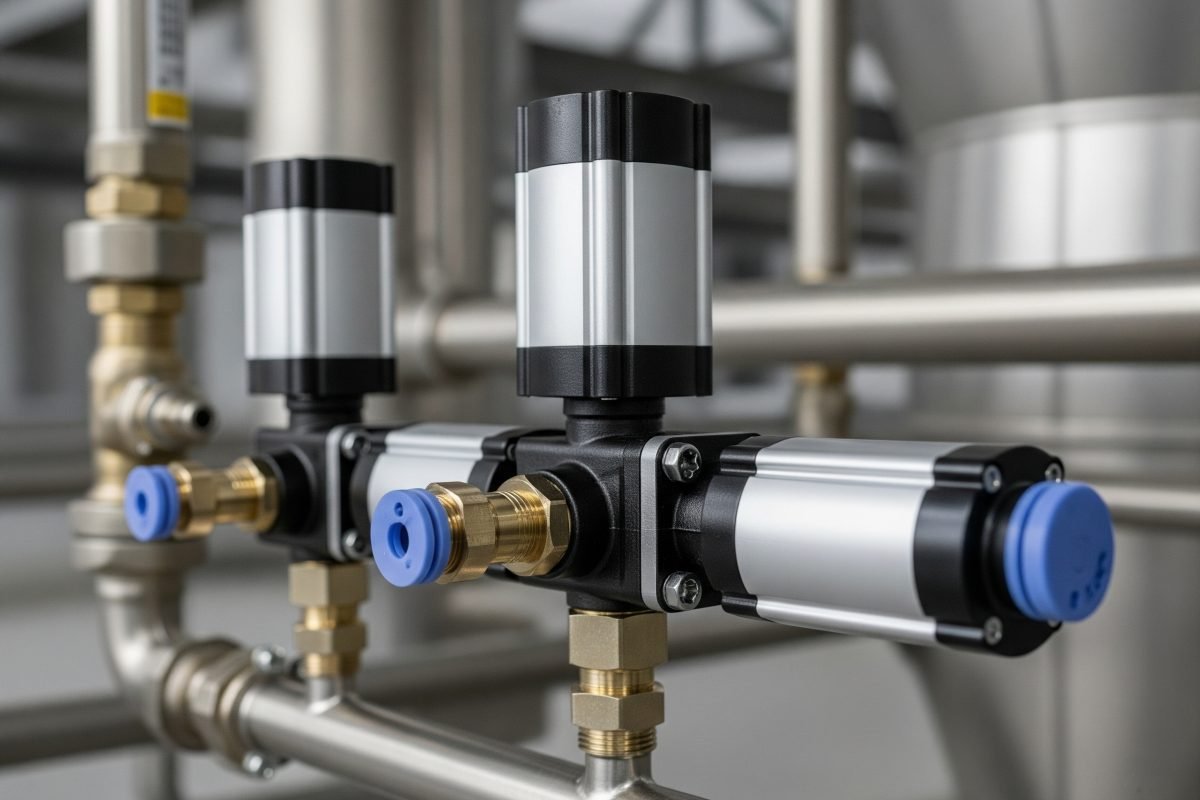
전기 부품이 위험을 초래할 수 있는 폭발성 또는 먼지가 많은 지역에서 사용하기에 이상적입니다.
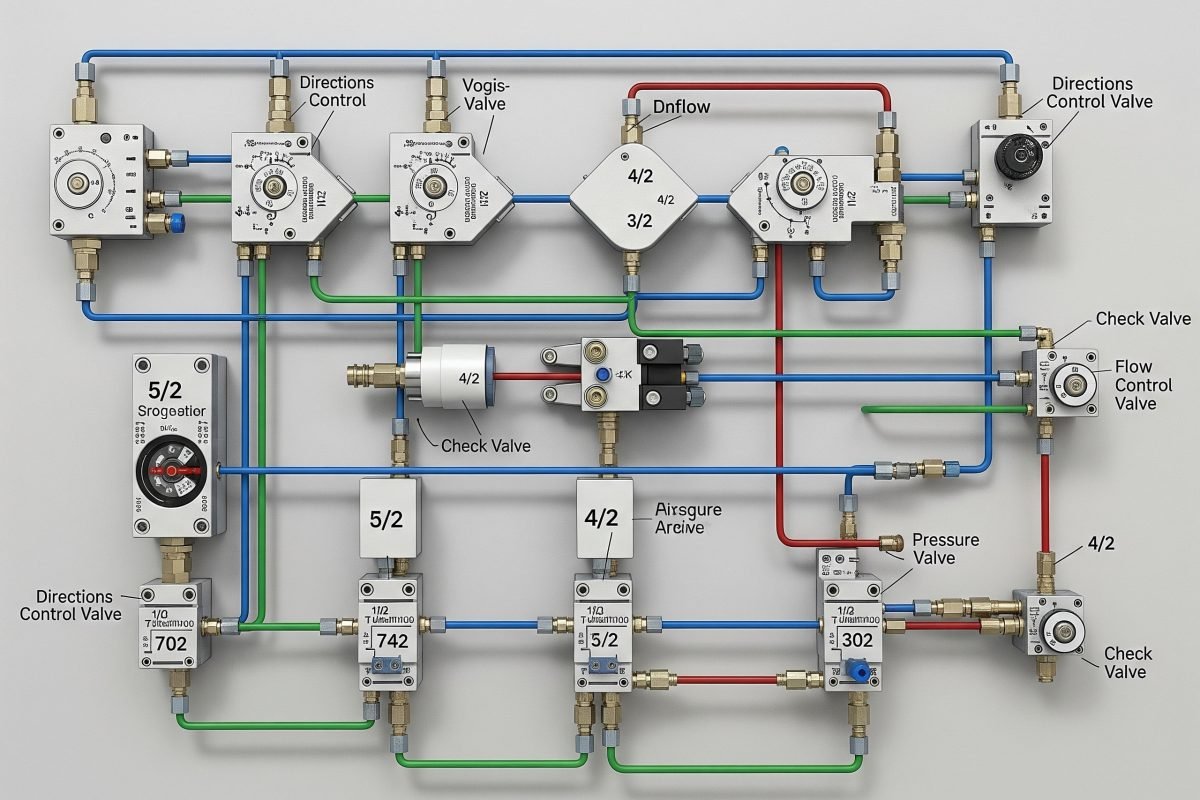
특정 시퀀싱 또는 로직 기능을 위한 순수 공압 제어 회로를 구축하는 데 사용할 수 있습니다.
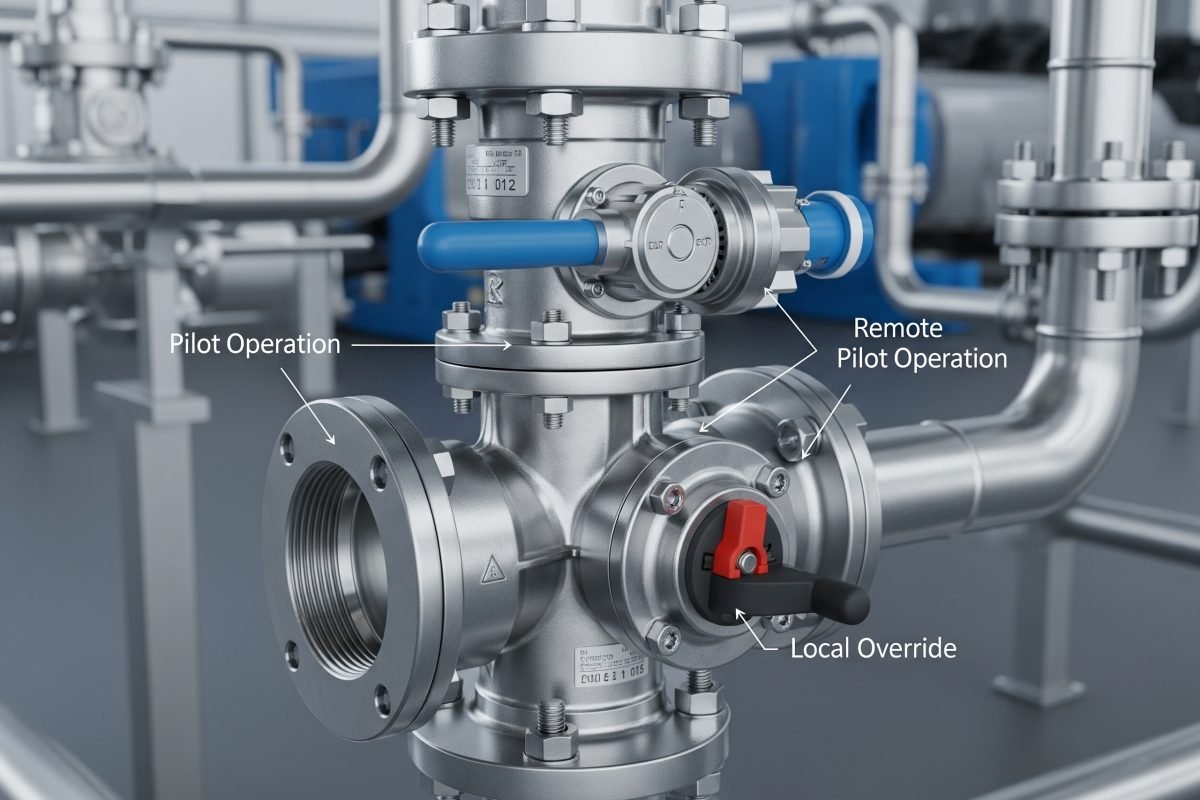
파일럿 작동으로 원격 작동이 가능하며, 수동 오버라이드를 통해 로컬에서 편리하게 제어할 수 있습니다.
설치, 유지보수 또는 문제 해결을 하기 전에 항상 시스템의 압력을 낮추고 전원을 차단하세요.
주요 차이점은 작동 방법:
두 가지 모두 공기 흐름을 제어하지만, 활성화 수단과 일반적인 애플리케이션 환경은 크게 다를 수 있습니다.
이 표기는 밸브의 기능을 설명합니다:
예를 들어
최소 파일럿 압력은 다음과 같습니다. 의 최저 기압 메인 밸브 스풀을 안정적으로 전환하려면 파일럿 포트에 필요합니다. 이 값은 각 밸브 모델에 따라 다르며 일반적으로 기술 데이터시트에 기재되어 있습니다.
파일럿 신호 압력이 이 최소 요구 사항을 충족하거나 초과하는지 확인하는 것이 중요합니다. 파일럿 압력이 너무 낮으면 밸브가 완전히 전환되지 않거나 느리게 전환되거나 전혀 전환되지 않아 시스템 오작동을 일으킬 수 있습니다. 최소 파일럿 압력은 일부 밸브 설계의 경우 메인 라인 압력에 따라 달라질 수도 있습니다.
예, 많은 공기 제어 밸브는 다음을 위해 설계되었습니다. 매니폴드 장착. 매니폴드는 공통 공급 및 배기 통로가 있는 베이스 블록으로, 여러 밸브를 나란히 콤팩트하게 장착할 수 있습니다.
매니폴드 마운팅의 이점은 다음과 같습니다:
공기 제어 밸브의 수명을 최대화합니다:
견고하고 안정적인 방향 제어를 위해 당사의 공기 제어 밸브는 고객이 필요로 하는 성능을 제공합니다. 당사의 제품군을 살펴보고 귀사의 애플리케이션에 가장 적합한 제품을 찾거나 공압 전문가에게 문의하여 전문가의 안내와 솔루션을 받아보세요.
